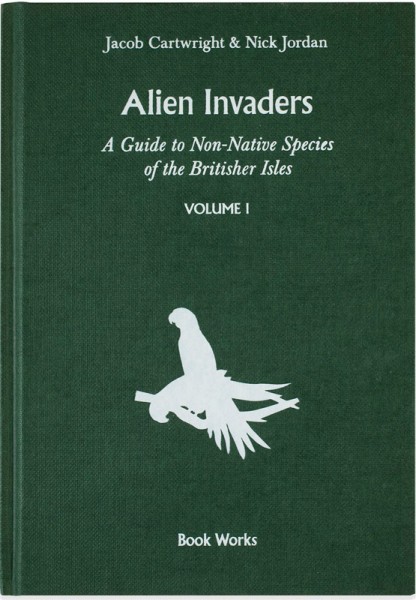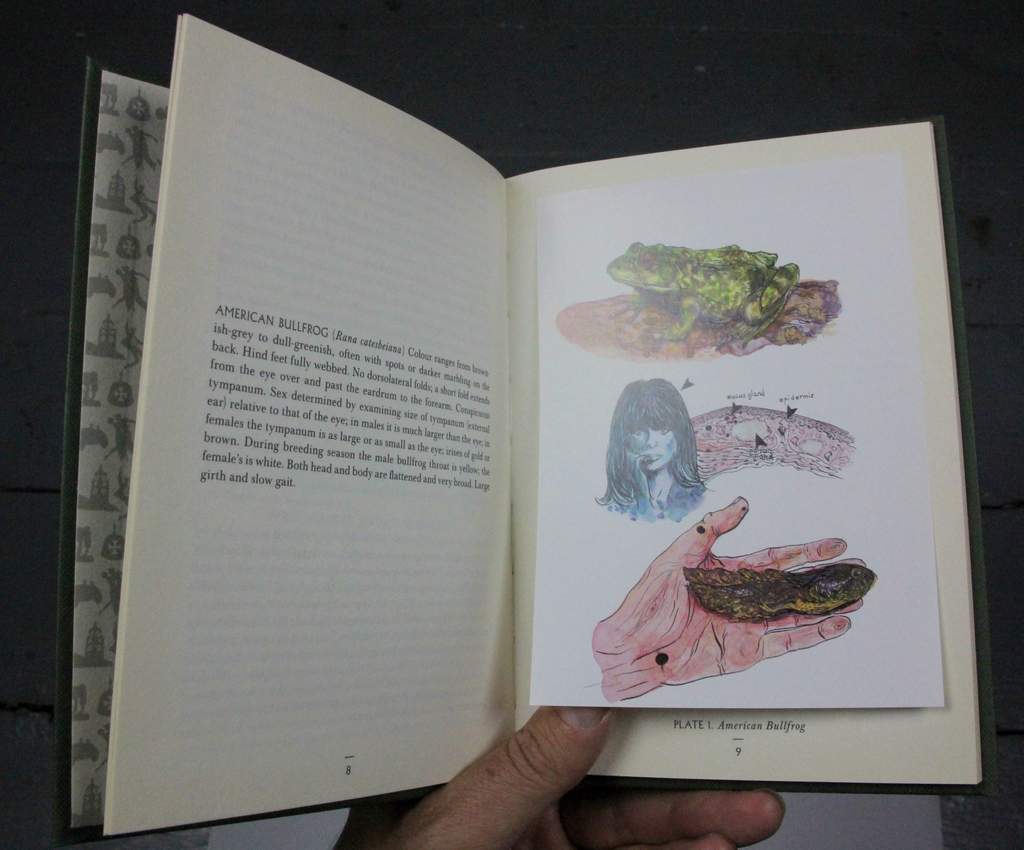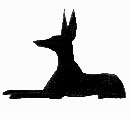
Alien
Invaders
A Guide To Non-Native Species Of The Britisher Isles
by
Jacob Cartwright & Nick Jordan
48 pages, 10 colour plates, hardcover, 2006
published by Book
Works

"Researching
invasive non-native species of plant and animal life, this collaborative
project documents, through drawing and text, the discovery and
history of selected alien species introduced to the British
Isles, and the effect on native wildlife. Presented as a cross-pollination
of fact and fiction, this wonderfully inventive book takes the
form of an illustrated natural history guide, offset by the
artists’ interventions.
"Ten alien invaders are categorised and illustrated, including:
the American Bullfrog, Giant Hogweed, Spanish Bluebell and Wels
Catfish. In the manner of a scientific guidebook each entry
lists, ‘Category of Introduction’, ‘Problems
caused by Introduction’, and ‘Efforts of Control
or Eradication’, drawing on both scientific fact and often
bizarre cultural anecdote." - Book Works catalogue
Alien
Invaders trumps the dull heavyweights of life science literature - LabTimes
Delightful
to handle....tart and pleasingly oblique - New
Statesman
click
here for more reviews
complete book artwork
Exotic Guests (Alien Invaders 2016, commissioned by The National Trust)
|
An extract:

Pharaoh
Ant
Category of introduction
Unintentional
Origins of introduction
The Pharaoh Ant is thought to originate from Egypt, from where
a mass exodus of this irritating pest has rapidly spread to
every corner of the globe (especially where central heating
is present). Proliferated by trade, and frequently intercepted
in cargo at international borders, the widespread and confusing
distribution of this ‘tramp ant’ means, however,
that its native origins will always be in some doubt (Gikys
& Kappelhoff, 1994). Significantly, the Pharaoh Ant was
properly noted and expertly drawn by the great British egyptologist
Howard Carter, during the dramatic opening of King Tutankhamen’s
Tomb, in 1922. On excavating the foreboding stairwell, and scoffing
at the inscription Death Shall Come on Swift Wings To Him Who
Disturbs the Peace of the King, Carter recorded being suddenly
transfixed by ‘a mass colony of erratic reddish ants,
containing several hundred queens, workers and pupae —
yes, wonderful things, and dare I wonder a precursor to the
hidden treasures contained in this noble antechamber …’
(Howard Carter’s Diary, November 5th, 1922).

Problems
caused by introduction
The Pharaoh Ant is an aggressive scavenger with a generalist
diet. It will eat just about anything, including other dead
ants and shoe polish. Unlike most ants it is a polygynous species
— with a mating system in which a single male has a breeding
relationship with more than two hundred queens. Each individual
colony normally contains 2,532 workers, but a high density of
nests gives the impression of incredible, enormous colonies.
They appear to lack nest-mate recognition; so, unlike common
ants, there is no hostility or disputes between neighbouring
colonies. The Pharaoh reproduces on a mass scale by ‘budding’,
where a subset of the colony, including queens, workers and
brood, leave the main colony for an alternative nest site (Grubbs
& Vlcek, 1987). Budding is the major contributor to their
problematic invasiveness: a fresh budded-up colony can populate
a large important office block, to the exclusion of all other
insect pests, in less than the average British forty-eight-hour
week.
In Britain the Pharaoh Ant inhabits only well insulated, heated
buildings, such as old people’s homes and hospitals, where
artificially high temperatures are usually sustained throughout
the year. Increasingly, the Pharaoh Ant has become a major hazard
in our hospitals; its miniscule dimensions allow it to get right
into things and directly access gaping wounds and driplines.
The ants, commonly nesting in wards, under cracked lino floor
coverings, spread infection through pathogenic microbes. They
contaminate sterile materials, such as rubber gloves, surgical
masks, glucose solutions, dressings, as well as the ubiquitous
grapes and flowers on bedside tables. Pharaoh Ants have even
carried infection to the eyelids of infants, causing some cutaneous
lesions on premature newborns (Fowler et al, 2004). ‘Superbug’
outbreaks, such as Staphylococcus and Pseudomonas, are thought
to be associated with these alien blighters. Infection between
patients can also spread between hospitals and geriatric homes,
when patients or staff move from one location to another, with
ants and larvae ferried unknowingly upon clothes and hair. The
Pharaoh Ant regularly nibbles through plastic food packaging
and totally infests the contents, causing much distress and
alarm to consumers. It also chomps through instrument cabling,
causing severe electrical interference or total malfunction.
Efforts of control or eradication
Due to colonies budding-up with neighbouring colonies when under
attack, the Pharaoh survives all known spray-delivered household
pest control treatments. Elimination, with honey or peanut butter
baiting programmes, is prone to difficulty because, when alerted,
multiple colonies subcontract into smaller colonies, which then
sub-divide into even smaller colonies, and so on, weathering
the storm and making themselves virtually invisible, only to
rebound and regroup when baiting is withdrawn (Deyrup, 2000).
Their close association with human beings, and the location
of nests within public buildings, means the miniscule Pharaoh
is easily transported and very difficult to control. Documented
cases of human-assisted spread include via infestation of loaves
of rye bread from Bavarian bakeries to psychiatric hospitals
in the former East Germany (Eichler, 1993), and via packaged
instant noodles, vests, soft-drinks and potted aspidistras (Eichler,
1978).


